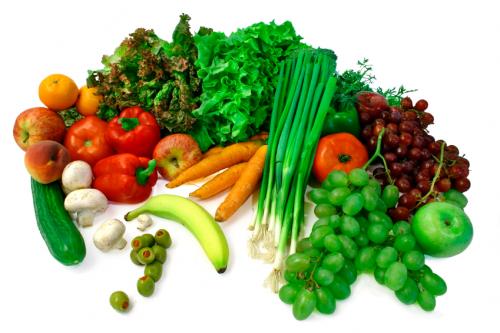Vivek Kaul
All other things staying the same, oil prices have always been inversely proportional to peace in the Middle East. The moment any tension or war breaks out in the Middle East, oil prices start rising. The logic is pretty straight forward given that the region has some of the biggest oil fields in the world and produces bulk of the oil that the world consumes.
Any tension is seen as a threat to supply of oil in the future, and taking that possibility into account, oil prices start to go up.
But this theory doesn’t seem to be working in the recent past. The Islamic State of Iraq and Syria (ISIS) has been waging a war in the region for a while now, but oil prices instead of going up, have been coming down. The international crude oil price of Indian Basket as on September 30, 2014, stood at $ 95.34 per barrel (bbl). The price must have fallen more since then, but no new data has been released given that the government has been on a five day holiday.
The brent crude oil is currently trading at around $92.8 per barrel. This is a fall of more than 19% since June 2014. The more ISIS has grown stronger in the Middle East, the more oil prices have fallen.
How does one explain this dichotomy? There are multiple reasons behind this. ISIS has managed to capture the largest oilfield in Syria and now controls 60% of the oil production in the country. Nevertheless this has had no impact on the price of oil globally. The reason for this is straightforward. Syria is the 32nd largest producer of oil in the world and in 2013 produced only 0.48% of the oil produced globally.
ISIS has also managed to take over a number of oil fields in Iraq. But they haven’t been able to move into the Southern part of the country where the majority of the oilfields are located. Iraq is the seventh largest producer of oil in the world and in 2013 produced around 3.75% of global oil. Hence, any disruption of oil supply in Iraq will have some impact on global prices. But that hasn’t happened.
As Crisil Research explains in a research report titled Falling crude, LNG, coal prices huge positive for India “This is because the likelihood of Islamic State progressing towards southern Iraq, which has about 65-70% of the country’s oil production and reserves, seems minimal. For one, that part of Iraq is dominated by Shia Muslims who do not support Islamic State.”
Further, ISIS also needs money to keep running their operations. And that means that they need to keep pumping oil out of the oilfields that they have captured. The oil is sold at a discount to the world price of oil, to Turkey, which in turn, resells it in Europe. This is another reason why oil prices haven’t risen. The supply from the captured oilfields is still hitting the world market.
Over and above this, the oil supply from Libya is coming back. A newsreport points out that Libya is pumping close to 925,000 barrels of oil per day. This has been the highest since Muammar Gaddafi was overthrown from power in Libya. Libya in 2013 produced around 0.85% of global oil production. These are the short term reasons as to why the price of oil hasn’t gone up, despite the advance of the ISIS.
There are several long term reasons as well. The United States and Canada are producing much more oil than they were a few years back. Data from the U.S. Energy Information Administration shows that United States in 2013 produced 12.35 million barrels per day. This is a massive increase of 35% since 2009. A recent report in the www.businessinsider.com points out that “In 2010 the [United States] still imported half of the crude it consumed, but the U.S. Energy Information Administration forecasts that will fall to little more than 20 percent next year.”
In case of Canada the production has gone up by 22.8% to 4.07 million barrels per day between 2009 to 2013. This massive increase in oil production has come from a boom in shale oil output. As a recent report in the Financial Times pointed out “Booming shale oil output has pushed US production to a 28-year high at the expense of imports.”
This has led to a situation where the United States has stopped importing oil from countries it was doing earlier. Take the case of Nigeria. The country did not import a single barrel of oil to the United States in July 2014. The country till four years back was one of the top 5 exporters of oil to the United States.
In fact as a October 2 blog on the Financial Times website points out “At its peak in February 2006, the US imported 1.3m b/d from Nigeria – equal to roughly one super-tanker the size of the Exxon Valdez every day. By 2012, Nigeria was already selling just 0.5m b/d, but was still one of the top-5 suppliers to the US, alongside Saudi Arabia, Canada, Mexico and Venezuela.”
Columbian oil exports to the United States have also fallen by a one third up to July this year, in comparison to the same period last year.
All this oil which was going to the United States earlier is now hitting the world market and is a major reason why oil prices have not rallied in the recent past. Interestingly, the US production of oil is now more than one third of the oil being produced in the Middle East. All this has had a huge impact on oil prices given that the United States is the biggest consumer of oil in the world.
Higher supplies from Iran are also expected to hit the market. Currently the country is facing international sanctions and is not allowed to sell a major portion of the oil that it produces. In 2013, Iran produced 4.77% of the total global oil production and was the fourth largest producer of oil in the world. As Crisil Research points out “In case of Iran, production is expected to return to the pre-sanctions levels of 4.4 mbpd from current levels of 3.1 mbpd as Iran is expected to co-operate with the international community after the change of regime post-elections.”
This is expected to happen because over the last two years international sanctions have had a severe impact on Iran. “In 2012 and 2013, Iran’s GDP registered a negative growth, inflation rose more than 60% cumulatively, and Iranian Rial depreciated by more than 85% cumulatively. Since Iran’s economy is oil-dependent, with oil exports contributing to ~85% of total exports, it will have to increase its oil exports to repair its economy,” Crisil research points out.
All these reasons, along with the fact that China’s economic growth is slowing down have ensured that oil prices haven’t gone up in the recent past. China is the second largest consumer of oil in the world after the United States.
In the recent past several analysts have suggested that Saudi Arabia and United States are working together to drive down the price of oil. This is being done to cut off the funding of ISIS. As oil prices fall, the price at which ISIS will have to sell oil will fall further. And that way, they amount of money they earn will come down. The question that needs to be answered is that how much truth does this theory have. I will try and answer that in the next piece. Watch this space.
The article originally appeared on www.FirstBiz.com on Oct 7, 2014
(Vivek Kaul is the author of the Easy Money trilogy. He tweets @kaul_vivek)




